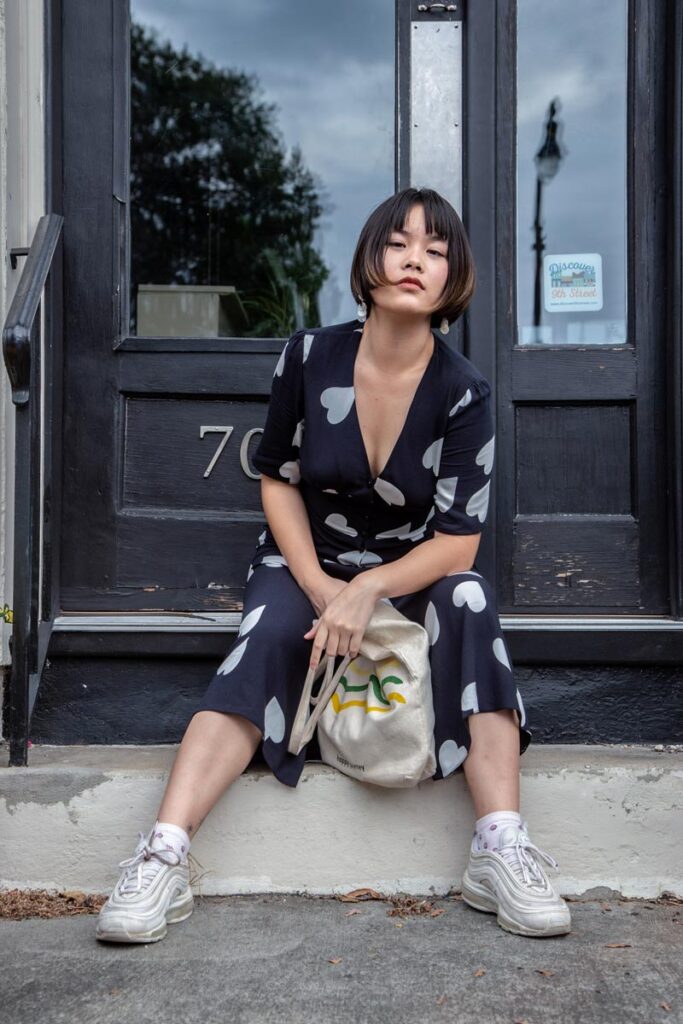In my photography, I want to show that magazines are misleading — we are all the same, yet we are routinely convinced that models are prettier, skinnier, better than us and that we have to change ourselves to fit the beauty standards set by the fashion industry. Fashion photography is a product of carefully calculated angles, professional equipment and hours of photoshoping. Why should we hate ourselves over photos that are not even real?
My work is all about people and their unique lives and personalities. It is a tribute to my friends and my only way of showing them how beautiful they look through my eyes.


Most of the photos you will see on this page are a part of my “What is Vogue?” project that aims to demystify fashion photography and heal people’s relationships with their bodies.


From the moment we are born, we are trained to despise ourselves. Everywhere we look, we see ideal versions of human beings, meticulously curated by editors and perfectly crafted in Photoshop. Times Square billboards, window displays, magazines, tv-shows, movies, commercials and now Instagram – these images are designed to present people as objects that can be sold and bought universally. These images are the reason why there are so many young girls and boys who grow up feeling insecure about their appearance and, as a consequence, suffer from body image issues and eating disorders.


Initially, my project began simply as an exploration of international students’ fashion and their cultural narratives. However, the more photoshoots I completed, the more I began to wonder about why my photos looked the way they did. Despite their documentary nature, the photos in my project looked and felt as if they were on a cover of a fashion magazine. I had no intention to do that – I never told students what to wear or how to pose. I simply asked my models to be themselves and wear the clothes that represented their culture and their day-to-day style. Each of the locations was randomly chosen and there was nothing too special about it: we could stop and shoot in a restaurant, a garden, sometimes even in front of a grocery store. There was no studio lighting, no creative direction, no pressure for models to look like someone they were not.

I made it my goal, however, to make each person feel good about themselves when they saw their photos. Whenever it’s me who’s being photographed, I feel paralyzed with fear, because an actual image of me always looks worse than my reflection in the mirror. I didn’t want anyone else to experience that sinking feeling, so I poured my heart into each of my photoshoots. When it was time to select and edit my project, subconsciously, I was looking for the photos that resembled those in fashion magazines, for those are the images that shaped my perception of beauty. I adjusted the lighting, contrast and colors to give my pictures that glossy, high-end feel that Vogue is famous for. Without me knowing, the stereotypes of “who and what looks good” took over my work – these stereotypes were so deeply ingrained in my mind that I ended up replicating them over and over in my own photography.


“What is Vogue?” is a project that uses the tools of documentary photography to debunk the myth that fashion photography can only exist within the realms of the modeling industry. After seeing my project, I want you to answer my main question: What is Vogue? Is it a world mainly inhabited by long-legged, slim-waisted models or a world inhabited by skilled photographers and editors?



